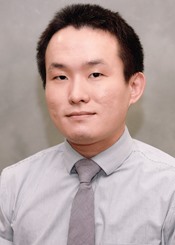Program Information
A New Approach to Proton Radiography Using the Beamline X-Ray Flat Panel
R Zhang*, K Jee , G Sharp , J Flanz , H Lu , Massachusetts General Hospital and Harvard Medical School, Boston, MA
Presentations
TU-FG-BRB-10 (Tuesday, August 2, 2016) 1:45 PM - 3:45 PM Room: Ballroom B
Purpose: Proton radiography, which images the patients with the same type of particles that they are to be treated with, is a promising approach for image guidance and range uncertainties reduction. This study aimed to realize quality proton radiography by measuring dose rate functions (DRF) in time domain using a single flat panel and retrieve water equivalent path length (WEPL) from them.
Methods: An amorphous silicon flat panel (PaxScan™ 4030CB, Varian Medical Systems, Inc., Palo Alto, CA) was placed behind phantoms to measure DRFs from a proton beam modulated by the modulator wheel. To retrieve WEPL and RSP, calibration models based on the intensity of DRFs only, root mean square (RMS) of DRFs only and the intensity weighted RMS were tested. The quality of obtained WEPL images (in terms of spatial resolution and level of details) and the accuracy of WEPL were compared.
Results: RSPs for most of the Gammex phantom inserts were retrieved within ± 1% errors by calibration models based on the RMS and intensity weighted RMS. The mean percentage error for all inserts was reduced from 1.08% to 0.75% by matching intensity in the calibration model. In specific cases such as the insert with a titanium rod, the calibration model based on RMS only fails while the that based on intensity weighted RMS is still valid. The quality of retrieved WEPL images were significantly improved for calibration models including intensity matching.
Conclusion: For the first time, a flat panel, which is readily available in the beamline for image guidance, was tested to acquire quality proton radiography with WEPL accurately retrieved from it. This technique is promising to be applied for image-guided proton therapy as well as patient specific RSP determination to reduce uncertainties of beam ranges.
Contact Email:

